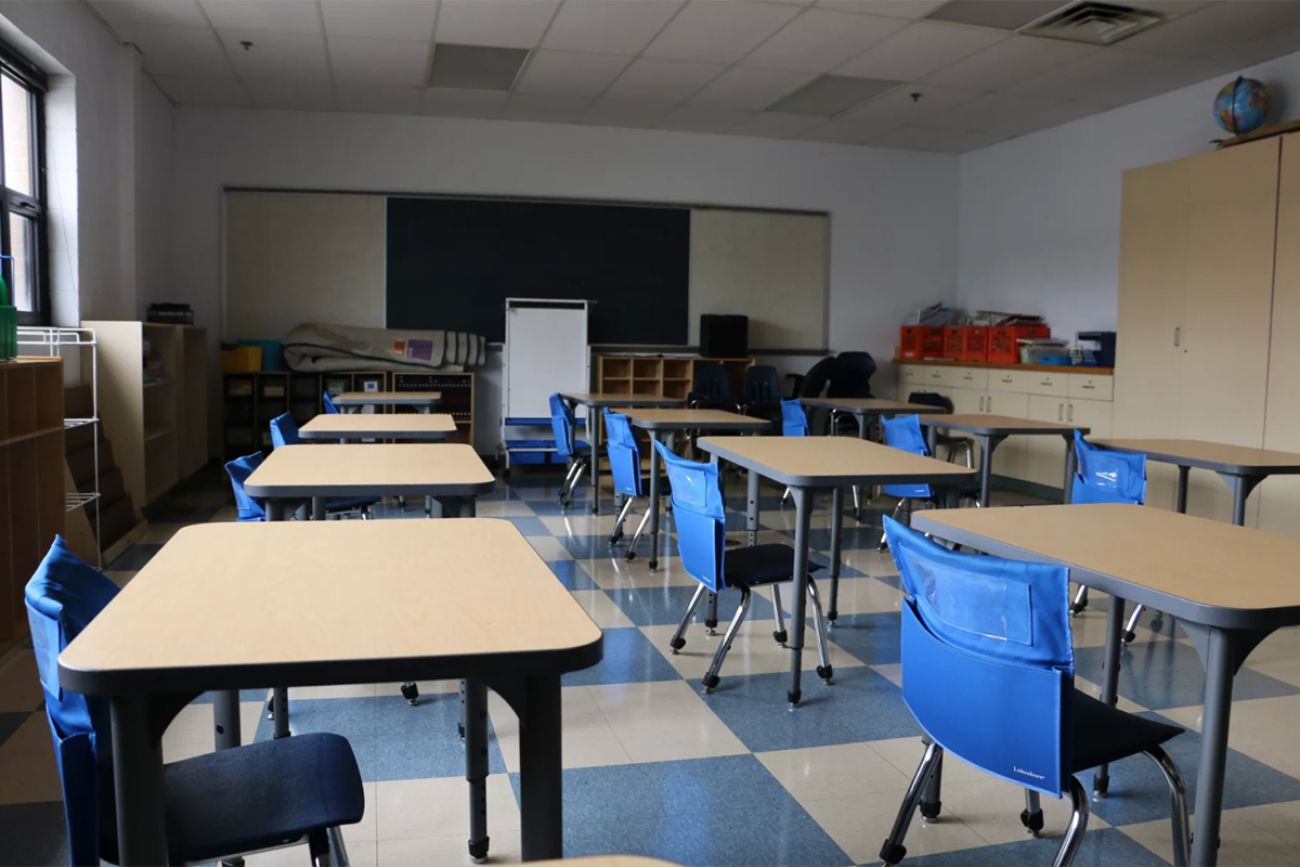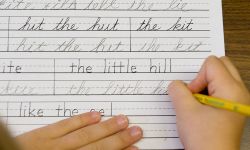Gov. Whitmer urges Michigan schools to offer in-class learning by March 1

Gov. Gretchen Whitmer on Friday urged Michigan schools to offer all K-12 students an option of returning to classrooms by March 1.
The guidance was not an order — local school districts will continue to be allowed to make their own decisions about what is best for their communities — but Whitmer’s message offered a glimpse of a return to normal life as COVID-19 vaccines begin to be administered, however fitfully, through the winter.
“The value of in-person learning for our kids is immeasurable, and we must do everything we can to help them get a great education safely,” Whitmer said.
It wasn’t immediately clear how many students are potentially impacted by the state’s tweaked guidance on school reopenings. Most districts in the state have offered at least an option of in-person instruction at some point during the current school year, which began in September.
A handful of districts, including Grand Rapids, Ann Arbor, and several in Oakland and Ingham counties (including East Lansing, where Whitmer’s daughter attends high school), have remained closed to in-class instruction since the governor ordered schools closed in mid-March. Many of those districts, however, already had announced tentative plans to reopen classrooms in mid- to late January.
Detroit Public Schools Community District, the largest school system in the state, announced this week that students would tentatively return to classrooms in February.
Lansing Public Schools doesn’t have a current return date.
The state is still allowing schools to make decisions locally to react to COVID spread in their communities.
The goal, Whitmer said, is to nudge districts that have not yet opened, or are currently allowing only elementary students in classrooms, to reopen for everyone who wants face-to-face instruction.
“Over the last 10 months, medical experts and epidemiologists have closely followed the data and have learned that schools can establish a low risk of transmission by ensuring that everyone wears a mask and adopting careful infection prevention protocols.”
Whitmer’s recommendations Friday also include:
- When feasible, assigning children to cohort groups and limiting their interactions to their group to reduce the number of contacts with other students.
- Keeping children six feet apart when feasible and being creative in using school spaces to stay distant.
- Providing adequate hand-sanitizing supplies and reinforcing proper handwashing techniques.
- Improving air ventilation.
- Having staff and students conduct self-screenings for symptoms at home every day before school.
- Ensuring schools work with their local health department if there are any positive COVID-19 tests.
- Having staff and students who either test positive for COVID or are in close contact with those who test positive follow the guidance issued by the Michigan Department of Health and Human Services as well as local health departments.
- Anyone considered a close contact of someone who tests positive but does not have symptoms should quarantine for 10 days under Centers for Disease Control guidance.
In November, the state paused in-person learning in high schools as part of an order to limit indoor gatherings to address a rapid increase in COVID-19 cases and deaths and in hospital occupancy rates.
That order ended Dec. 21, and many school districts returned to classrooms this week or plan to return Monday.
Related stories:
- Coronavirus Tracker | The latest news
- Blank screens, distracted students: Michigan teachers on COVID classrooms
- ‘It’s been hell.’ 1 house, 5 kids, and a pandemic struggle to learn at home
The school recommendations Friday were lauded by State Superintendent Michael Rice and numerous education associations.
“In-person instruction matters,” Rice said in a statement. “Learning at a distance is not a substitute for in-person instruction for most children. With the necessary supports to protect their physical and social and emotional health, our students and educators are at their best with in-person instruction.”
Launch Michigan, a statewide K–12 partnership consisting of education, business, parent, philanthropic and civic leaders, supported the move.
“The governor’s plans for a safe return to school offer welcome news for our state and its children,” Launch Michigan president Adam Zemke said in a statement. “While necessary, we know distance learning has been challenging for all students and educators and, while all have stepped up in huge ways, we know learning is strongest when it happens face to face.”
Robert McCann, president of K-12 Alliance of Michigan, a public school advocacy organization, told Bridge Michigan that for the order to be effective and safe, teachers, staff and administrators need to be vaccinated.
Educators are eligible to begin receiving COVID-19 vaccinations on Monday.
“There needs to be a better timeline so if we have this goal, we have a plan to get teachers vaccinated by (March 1),” McCann said. “And we need guidance on when it’s safe – is it after the first dose? After the second one?
Both vaccines currently available, manufactured by Pfizer and Maderna, require two shots.
Whitmer’s recommendation comes on the heels of several studies released recently that suggest schools aren’t as major of a contributor to the spread of the potentially deadly virus as had been feared in the fall.
The studies, one conducted at Tulane University and one by researchers at Michigan State University, found that schools mirror their communities in regard to the spread of coronavirus: In-person classes don’t increase spread if there’s a low-rate of the virus in the surrounding area, but add to the problem when caseloads are high.
That may not be the clear, unambiguous answer sought by Michigan families now struggling with homebound learning, but the studies do provide the first metrics to help schools make decisions about when – and how – to reopen classrooms.
The MSU study examining community COVID rates and school learning models (in-person, remote or hybrid) in Michigan and Washington state found little evidence of schools contributing to virus spread when community case counts were under 20 new cases per day per 100,000 people; above that number, though, in-person school exacerbated the spread. There are currently 32 new cases per 100,000 in Michigan, with the rate in individual counties ranging from a high of 59 cases per 100,000 in Lenawee County to 0 in Luce County.
“Once you get to a certain point of community infection rates, it does look like being in-person … is associated with COVID spread in the community,” Katharine Strunk, an author of the MSU study and director of the Education Policy Innovation Collaborative at Michigan State University, told Bridge Michigan.
That same study found that hybrid models of instruction used by many schools in the state – with students learning in classrooms a few days a week and at home other days, to limit the number of students in school buildings at any one time – were not associated with increased COVID spread, Strunk said.
One possible reason: with fewer students in classrooms, desks can be spaced farther apart.
Schools in Ingham County, where Michigan State University is located, have been the most cautious in the state about reopening classrooms because of what at times has been high case counts at the East Lansing university campus.
Whitmer said Friday she was aware of the fully remote learning policy of her daughter’s school district, but didn’t know how widespread that practice was in her home county until she spoke recently to Ingham Health Director Linda Vail.
Jason Mellema, superintendent of the Ingham Intermediate School District, said local districts in the county, which includes Lansing, are likely to take the governor’s recommendation to heart and gear up to offer in-person options.
Ann Arbor Superintendent Jeannice Swift said that while school buildings have been closed since March, they have been retrofitted in preparation for classes to reopen, including renovations of HVAC systems to improve air quality and the installation of hands-free water coolers and restrooms.
“We want to return to class,” Swift said. Educators “are hard-wired to be face to face, in person, inside our classrooms. And yet, we want consistent instruction, and our top priority remains the safety of our children and our staff.”
Swift said no date has been set yet for a return to classrooms. When students return, schools will operate in a hybrid model, with students splitting their time between classrooms and remote learning. Students who wish to continue learning from home will be able to do so.
Lena Kauffman, the parent of a middle-schooler in Ann Arbor Public Schools and a co-founder of Ann Arbor Reasonable Return, a group that has advocated for classrooms to reopen, said she was happy to hear the governor push for school reopenings.
“The science has changed over the past many months,” Kauffman said. “We’ve been able to observe what’s happened with districts that have opened, and seen that it can be done safely.”
There have been hundreds of documented coronavirus outbreaks in Michigan schools, but most of the outbreaks consist of fewer than five students and staff.
Omkar Karthikeyan, a pediatrician in Ann Arbor and the parent of two elementary children who have been learning remotely this school year, said studies are showing that children are infected at lower rates than adults, and serve as vectors for the virus at lower rates. With mitigation efforts mandated by the state, such as face masks, schools are relatively safe, Karthikeyan said.
In his practice, he said he’s seen an increase in obesity among children, and anxiety and depression among teens, which he attributes to homebound learning.
“Socialization is such a big part of the experience of school,” Karthikeyan said.
Whitmer emphasized that families should have the option of remote learning, but that they should also have the option of learning in classrooms that take health precautions.
“Many students and families have struggled with remote learning,” Whitmer said. “Every family deserves to know that their child is safe and being educated in a classroom.”
Michigan Education Watch
Michigan Education Watch is made possible by generous financial support from:
Subscribe to Michigan Education Watch
See what new members are saying about why they donated to Bridge Michigan:
- “In order for this information to be accurate and unbiased it must be underwritten by its readers, not by special interests.” - Larry S.
- “Not many other media sources report on the topics Bridge does.” - Susan B.
- “Your journalism is outstanding and rare these days.” - Mark S.
If you want to ensure the future of nonpartisan, nonprofit Michigan journalism, please become a member today. You, too, will be asked why you donated and maybe we'll feature your quote next time!






